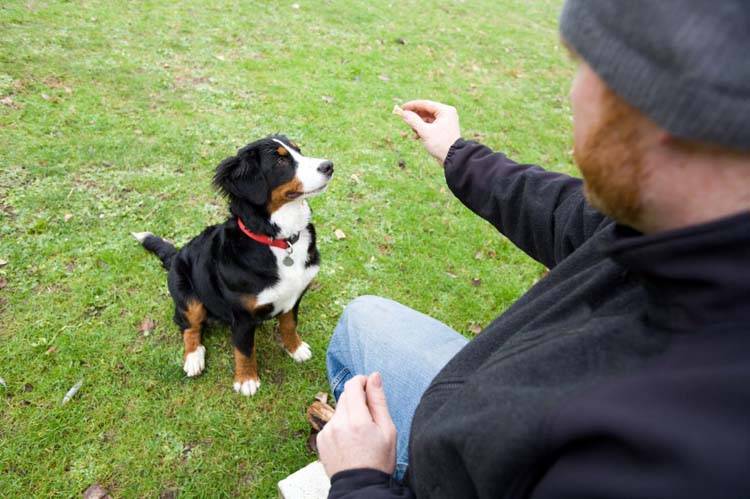Teaching the “Leave It” Cue
The “leave it” cue can be taught for several different purposes. This is an important cue to teach your dog because it can prevent your dog from harm.
When teaching the “leave it” command, you’ll want to use several different objects. Additionally, you’ll need to gradually increase the amount of time your dog actually leaves the object. This will teach him to become functional in real world situations.
How to Teach Your Dog “Leave It”
Begin with the “Take It” Cue
First thing’s first, you’ll need to start out in an area with very little distraction. Place a low value treat like a piece of kibble in your hand. Offer your dog your treated hand palm up with the treat displayed. If your dog takes the treat, mark the behavior by saying “take it” and praise him. Repeat this action until the behavior and cue are known.
Wait for Him to Stop Sniffing
Once your dog knows the “take it” cue, start working on the “leave it” cue. For “leave it,” start out by again placing a small low value reward in your hand. Close your hand firmly. Wait for him to stop sniffing your hand and back away, or look to you for instruction.
If your dog doesn’t offer either one of these behaviors and continues to sniff your hand, swiftly pull your hand away and out of reach. Then, give a no reward marker. A no reward marker is something you use to inform a dog he has offered the incorrect behavior and to try again. Some professional dog trainers use a noise like “eh eh” while others use the word “no.” Once you have given your dog the no reward marker, follow up with the “leave it” command.
Mark the Behavior and Repeat
After your dog has stopped sniffing the baited hand, mark the behavior with “leave it.” Give your dog a known conditioned reinforcer like “good” and the release cue. Remember to repeat this action until your dog has a clear association with the new cue. When your dog has an understanding of the “leave it” cue, increase the amount of time in between the “good” and the release cue.
RELATED: How to Train a Dog to Respond to Commands
Increase the Length of Time
Increase increments of time by 10 seconds each training session. If your dog can’t perform the “leave it” cue at a longer increment of time, start the exercise over. Make sure to use a shorter increment of time between the “good” and the release cue until he can perform correctly nine out of 10 times.
Start Using High Value Rewards
When your dog can perform the “leave it” cue for about a minute, you can start using higher value rewards like toys and treats to practice. It may become more difficult for your dog to perform the “leave it” cue once the reward value is increased. If this happens, just go back to using the low value reward until he performs the correct behavior nine times out of 10.
When your dog can perform the “leave it” cue at a 90 compliance rate during each dog training session, using different higher valued rewards, you can then increase the amount of time you make him “leave it.” Remember, if your dog can’t perform this command nine out of 10 times, don’t increase the duration of “leave it.”
For every correct performance of the “leave it” behavior, give your dog the “take it” cue at least three times to increase your dog’s desire in performing the “leave it” cue.
As mentioned above, this cue comes in handy in several different scenarios. Most cases will be in routine training exercises. However, this can also save your dog’s life in the event of a harmful substance or another animal.
You may also like: How to Teach Your Dog to Put Away His Toys





